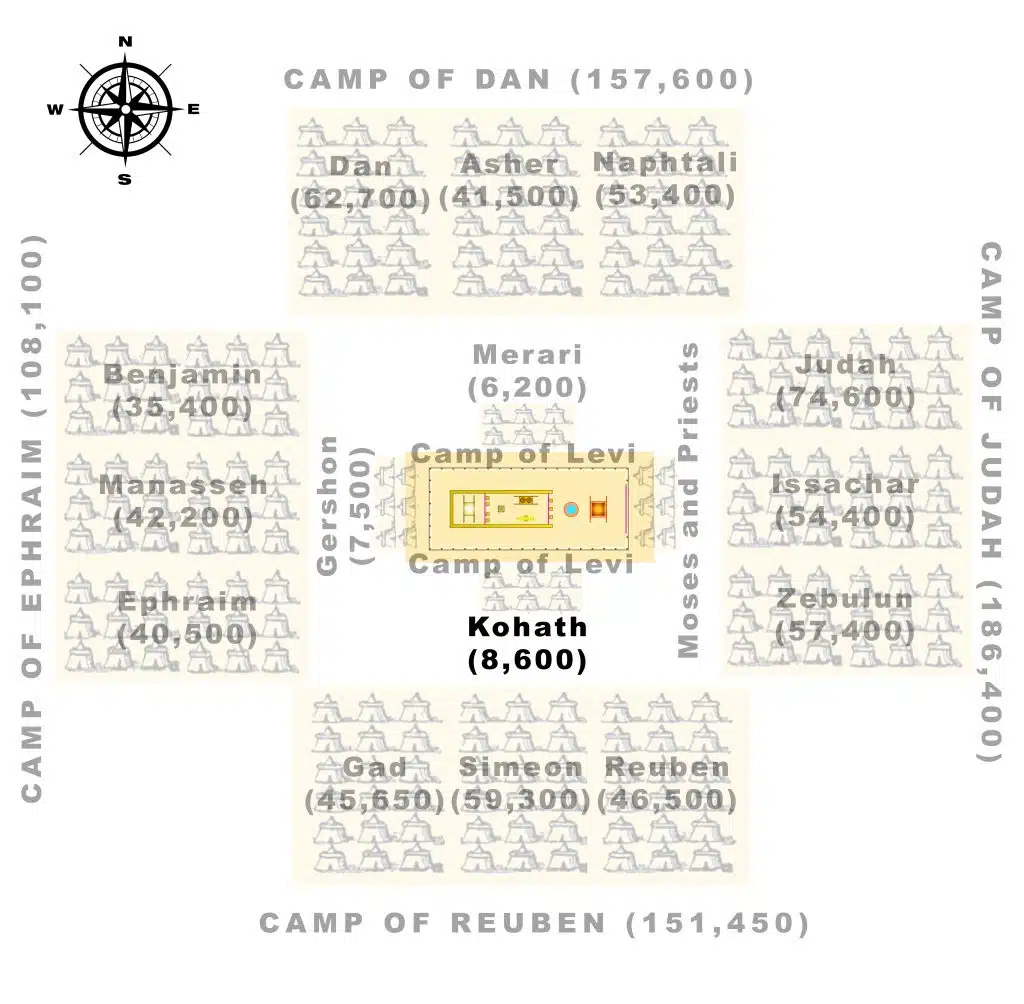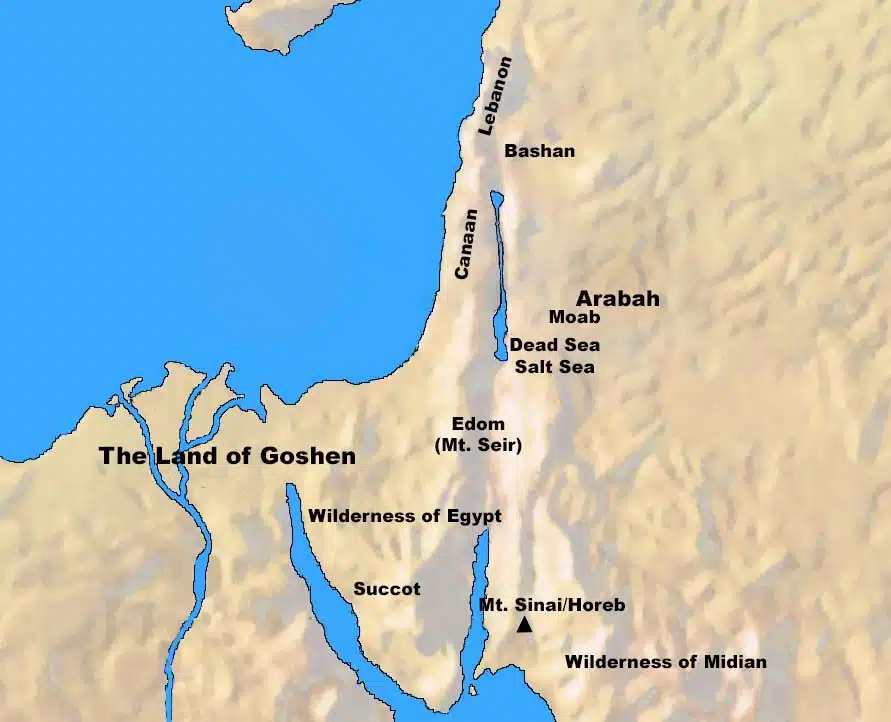The next group considered was the family of Kohath, Levi’s second son, in verses 27 through 32. As in the previous sections, it recorded their numbers, their placement in the camp, their appointed leader, and their duties in service to the priests and the tabernacle.
Regarding the descendants of Kohath, there were the following families:
–The family of the Amramites. Aaron and Moses were part of this family (Exodus 6:20).
–The family of the Izharites. Izhar means “he [God] shines.”
–The family of the Hebronites
–The family of the Uzzielites. Uzziel means “my strength is God.”
These four were the families of the Kohathites.
Verse 28 contains the numbering of every male from a month old and upward. Using these criteria, there were 8,600 Kohathites qualified for performing the duties of the sanctuary. This census of 8,600 compares to the census of men 20 years and older numbering 251,450 in the camp of Reuben.
Concerning their location in the camp, the families of the sons of Kohath were to camp on the southward side of the tabernacle. This would place them as a buffer between the tabernacle and the camp of Reuben on the southern side of the camp.

The LORD appointed the leader of the fathers’ households of the Kohathite families. It was Elizaphan [“God has protected”] the son of Uzziel [“God is my strength”]. The Bible does not use the term “grandfather.” There would have been about a thousand years between the birth of Kohath’s second born son Uzziel and Elizaphan, but Elizaphan is still the “son of Uzziel.” This demonstrates that lineage had been carefully kept while Israel was in Egypt, likely through oral tradition.
For the Kohathite families, their duties involved the following:
–The ark. This was the gold-covered box placed in the Holy of Holies in which were placed the tablets on which the Ten Commandments were written, Aaron’s rod that budded, and a jar of manna.
–The table. This was where the daily bread was place before the Lord in the sanctuary.
–The lampstand. The lamp (or “menorah”) was displayed across from the table.
–The altars. These were likely the altars of incense inside the tabernacle.
–The utensils of the sanctuary with which they minister. These were the utensils associated with the ceremonies inside the tabernacle.
–The screen. This would refer to the screen that separated the inner sanctuary, where the table and lamp resided, and the Holy of Holies in which dwelt the ark.
In other words, they were assigned to carry and place the holy objects that were inside the tabernacle. A description of the articles and their intended use can be found in Exodus 25-30. These “duties” included all the service concerning them, that is, the carrying of them, the setting up when camped, and their general care. Only the priests were allowed to enter the tabernacle to perform the duties of worship. So the sons of Kohath would likely have packed up, transported, and assembled the tabernacle, but then not participated in the services of worship.
Verse 32 states that Eleazar [“God has helped”] the son of Aaron the priest was the chief of the leaders of Levi. That is, he had the oversight of those who perform the duties of the sanctuary. They were to minister under his oversight and authority. This is probably mentioned since only the sons of Aaron were allowed to minister in the tabernacle. It seems likely that one of Eleazar’s duties would have been to create clear lines of responsibility so that the sons of Kohath did not overstep their authority. The Kohathites were to serve those who ministered in the sanctuary, but were not themselves allowed to minister within.
Korah, a descendant of Kohath, was among the Kohathites. Later in Numbers, he and other men insisted on expanding their authority and were met with deadly consequences (Numbers 16).
Biblical Text
27 Of Kohath was the family of the Amramites and the family of the Izharites and the family of the Hebronites and the family of the Uzzielites; these were the families of the Kohathites. 28 In the numbering of every male from a month old and upward, there were 8,600, performing the duties of the sanctuary. 29 The families of the sons of Kohath were to camp on the southward side of the tabernacle, 30 and the leader of the fathers’ households of the Kohathite families was Elizaphan the son of Uzziel. 31 Now their duties involved the ark, the table, the lampstand, the altars, and the utensils of the sanctuary with which they minister, and the screen, and all the service concerning them; 32 and Eleazar the son of Aaron the priest was the chief of the leaders of Levi, and had the oversight of those who perform the duties of the sanctuary.
Check out our other commentaries:
-
Matthew 9:14-15 meaning
John the Baptizer’s disciples come to Jesus and ask Him why His disciples do not fast (like they and the Pharisees do). Jesus answers them...... -
Revelation 19:20-21 meaning
The armies of the antichrist have gathered to defy Jesus and His heavenly forces. But immediately, the antichrist and his false prophet are grabbed and...... -
Genesis 6:14-18 meaning
God tells Noah to make an ark and gives him specific instructions how to build it. God reminds Noah of the judgment of the flood...... -
Genesis 19:8-10 meaning
Lot reminded the lustful mob that the two visitors were under his protection and offered his two virgin daughters to the men to appease them,...... -
Daniel 2:1-6 meaning
The King of Babylon has a dream and demands that his wisemen not only tell him what it meant, but also tell him what he......



